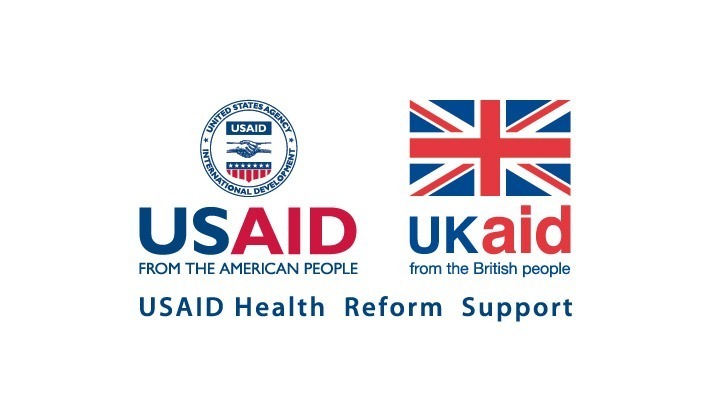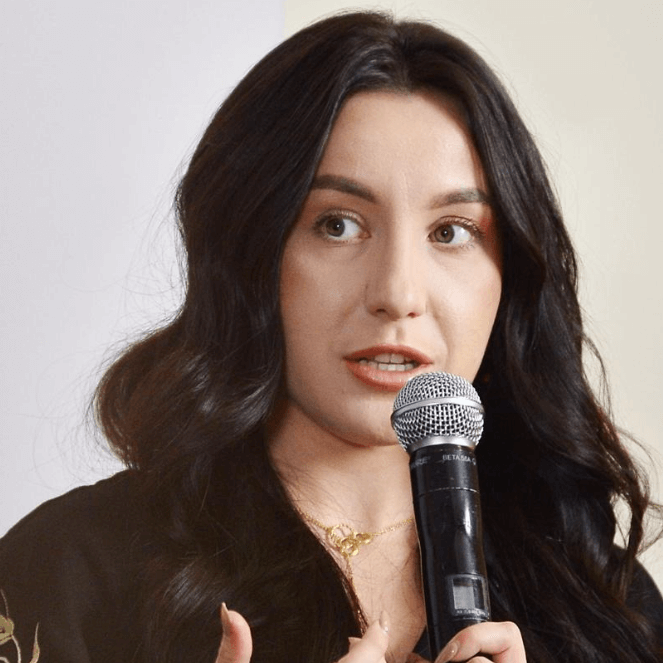Russia’s aggression in the information field is aggression the world has never seen before. Not just genocide is being waged against Ukrainians, but also information exhaustion, disinformation campaigns, and all methods of information influence, which humanity did not know about before and did not know how to fight them. In the conditions of the hybrid war against Ukraine, there are also attacks on the health care sector, which can directly harm the health of Ukrainians.
How exactly does the enemy affect our health in the information field, and how to counter the enemy’s disinformation in the health field? We sought answers to this question with representatives of the government and medical and journalistic communities during a discussion at the online presentation of the database of health fakes, “Detox from Propaganda“, which took place on September 26.
In the discussion during the event, participated:
- Oleksii Kutsenko, senior technical advisor and head of strengthening the health care management system of the USAID Health Reform Support project,
- Mariia Karchevych, Deputy Minister of Health for Digital Development, Digital Transformations and Digitalization of the Ministry of Health (MOH) of Ukraine;
- Anastasia Kisilova, communications manager of the Ministry of Health of Ukraine
- Fedir Lapii, head of the National Technical Group of Experts on Immunoprophylaxis, a consultant on vaccination against COVID-19 in World Bank projects, chairman of the board of “Parents for Vaccination”;
- Kateryna Balabanova, director of the Nursing Development Center;
- Natalia Bushkovska, journalist and fact-checker;
- Daryna Dmytriievska, family doctor and co-founder of the NGO “Medical Leaders”.
The database of health fakes “Detox from Propaganda” and its presentation is the result of the joint work of the VoxCheck team and the USAID Health Reform Support project, At the same time, the project partner, the Ministry of Health of Ukraine, supported our joint efforts and distributed our materials on their resources during all four months of the project implementation.
What is the “Detox from Propaganda” platform?
With the support of the USAID Health Reform Support project, VoxCheck weekly analyzed and refuted the health care narratives spread by russian propaganda in the information space of Ukraine, Belarus, and russia for four months. The VoxCheck team used electronic monitoring tools as well as manual research of platforms and social media research. The main channels for monitoring were social networks, television, radio, the press, and news agencies.
Each of the narratives falls into one of three categories:
- disinformation, i.e., deliberate dissemination of false information;
- misinformation, i.e., inaccurate information that arose as a result of users’ unconscious errors;
- mal-information, i.e., accurate information used to harm a person, organization, or country.
After discovering such narratives, the VoxCheck team fact-checks them using official and verified sources. Based on the checks, VoxCheck has created a “Detox from Propaganda” database, which includes 1,273 cases and 13 narratives. Therefore, each fake became an example of one of these separate narratives.
Health Disinformation: Top Hostile Narratives for June-September
1. Military-biological laboratories and medical experiments on citizens of Ukraine
This was one of the most popular topics for fakes that circulated in the russian media. As a rule, they could be classified as “disinformation”. Usually, the primary source for such disinformation narratives was the russian Ministry of Defense. Following the Ministry of Defense, the media and social networks of the russian federation massively spread statements that Ukraine and the United States were allegedly conducting medical experiments on people.
The kremlin’s propaganda aimed to intimidate and convince people that biolaboratories are a severe danger — that, allegedly, their activities have led to serious diseases. According to the fake authors, this fact directly proves the presence of NATO in Ukraine or that the Ukrainian side was preparing provocations with weapons of mass destruction.
2. Black transplantology in Ukraine
Propagandists spread messages that supposedly, in Donbas, “black transplant specialists” take organs from wounded Ukrainian soldiers and locals with pro-russian views and sell children for organs. So, for example, the russian media interpreted the permission for Ukrainian commanders to certify the wills of the military as permission to sell their organs.
One of the goals of such narratives was to cause distrust in the Ukrainian authorities and intimidate the local population. These fakes were often aimed at the people of the occupied territories, in particular, the Donetsk and Luhansk regions. False statements were also supposed to demoralize the military in this way.
3. Ukraine poses a threat of chemical attacks
This narrative was also one of the most shared over the past four months. Fakes on this topic appeared in the russian segment, but sometimes they could also be found in Italian, Serbian, and Belarusian media. The russian mass media have repeatedly written that the Ukrainian military allegedly blows up tanks with chemical substances, mines chemical warehouses, arranges ecocide, or uses chemical weapons against the russian army.
The purpose of such statements for russia was to create the so-called “informational noise” to strike the chemical facilities themselves. Such fakes were also supposed to intimidate the population and instill a certain loyalty to the occupation regime to create an enemy of the Ukrainian government for its own population.
4. Ukraine threatens with biological weapons
Russian social networks, mass media, and some personal Facebook accounts spread fakes that the Ukrainian authorities were deliberately infecting people with tuberculosis or other deadly diseases or developing biological weapons with other countries on their territory. Such messages also belonged to disinformation, and mostly their primary source was information provided by the Ministry of Defense of the russian federation.
The russian federation uses unsubstantiated arguments to justify the need to “protect” the population of Ukraine, that is, to carry out a full-scale invasion of the territory of a neighboring independent state.
5. Spread of infectious diseases in Ukraine
This narrative can be attributed to misinformation. That is, there is no clear evidence that fakes on this topic have russian origins. Therefore, it can be noted that users made deliberate mistakes by referring to anonymous sources. So, for example, news appeared on the network that Ukraine is facing an outbreak of infectious diseases, that the water is contaminated with cholera bacillus, etc. Such statements were refuted by the Ministry of Health (MoH) of Ukraine.
6. An outbreak of monkeypox
Against the background of the spread of monkeypox in Europe, narratives began to appear more often in which the threat of this disease is belittled or wholly denied.
Fake news is somewhat similar to what conspiracy theorists wrote about COVID-19. They were distributed both in Ukraine and in russia, Belarus, Georgia, Estonia, and Azerbaijan. So, among the main monkeypox hoaxes were: monkeypox preparedness is a new scheme to deceive the public, or monkeypox vaccination is dangerous. Such fakes were part of both disinformation and misinformation campaigns.
7. The humanitarian crisis in Ukraine
For the most part, it was russian mal-information that began to appear in May, when the issue of humanitarian aid in the occupied territories was acute in Ukraine. Most often, false messages on this topic could be found on anonymous Telegram channels. The main message was that Ukraine does not care about its citizens at all, and distributes humanitarian aid in the territories under its control only for money, while russia really “helps” people in the occupied territories: opens pharmacies, restores water supply, imports medicine.
Such fakes had a clear intention — to cause a reputational collapse of Ukraine’s ability to provide the basic needs of the population in the territories controlled by Ukraine and the occupied territories.
8. The Ukrainian Armed Forces are militarizing objects
Fakes on this topic were part of the russian disinformation campaign. They were launched in response to the entire world when footage emerged of russia destroying civilian infrastructure in Ukraine, including medical facilities. Russia began to shift the blame to the Ukrainian side for the alleged use of civilian objects by the Armed Forces of Ukraine for military purposes. Allegedly, the Ukrainian military deploys military equipment, battalion units on hospital bases, transforms medical facilities into territorial defense headquarters, etc. Such statements again came from the mouth of the russian Ministry of Defense, and later they were picked up by the pro-kremlin media.
Such messages have a direct threat, they created “informational noise” before russia struck certain objects.
9. The Ukrainian authorities and the West are planning a famine in Ukraine, and the world
This disinformation campaign was closely related to conspiracy theories. Within this narrative, there was hatred for any international institutions, for the “collective West”. Russian media and Telegram channels spread fakes that the Ukrainian authorities and the West were planning a famine in Ukraine and the world. A separate sub-narrative was that the Armed Forces of Ukraine were allegedly destroying granaries or purposefully burning wheat fields. And in return, russia allegedly helps to solve the food crisis.
10. The coronavirus pandemic and vaccination
The coronavirus pandemic remains an “evergreen” topic for health fakes. Russian and Western sources spread disinformation about this. Among the popular theses is that vaccination against COVID-19 is harmful and reduces the birth rate, or that in Europe, the population will again be deceived, and quarantine restrictions will be introduced. The russian media disseminated supposedly new “evidence” of US involvement in the emergence of the new coronavirus, which was made public by the russian Ministry of Defense.
11. Provocations at the ZNPP
For russia, the Zaporizhia NPP became a reason for provocations and blackmail of the Ukrainian side and the whole world. Russians desperately tried to justify acts of terrorism and shift the blame to Ukraine, constantly inventing hundreds of fakes and manipulations surrounding the situation at the ZNPP. Throughout July and August, the russian media and social networks promoted the narrative that Ukraine was provoking a nuclear disaster at the ZNPP. Also, in August, the pro-kremlin press reported that the Armed Forces of Ukraine had allegedly struck a radioactive waste storage facility at the ZNPP. This is precisely how the russian federation conducts a disinformation campaign to justify the shelling of the ZNPP.
12. Reforming the health care system
There were also many manipulations about the health care system reform both in Ukraine and worldwide. For example, the occupying authorities of the Kherson Region declared that they were canceling the medical reform because it “killed medicine” by allegedly liquidating or privatizing medical institutions.
13. Drug laboratories and combat drugs for the Armed Forces of Ukraine
Actually, the very term “drug laboratories” was invented by russian propagandists. The key goal was to prove that anyone who defends Ukraine does so only under the influence of certain substances and not out of goodwill because Ukraine must obediently “wait for russian liberation.” Such fakes were mainly aimed at the russian audience. In numerous stories on russian television, they tried to provide specific evidence for such statements. In particular, propagandists came to broken factories and showed alleged bottles in which drugs were stored.
Who, how, and where spreads disinformation?
“To understand fakes, you need to understand who created them and why – their nature and sources,” notes Fedir Lapii, head of the National Technical Group of Experts on Immunoprophylaxis, a consultant on vaccination against COVID-19 in World Bank projects, chairman of the board “Parents for vaccination”.
According to Lapii, there are several primary sources of fakes. The first source is people or institutions that deliberately spread disinformation. The second source is the so-called “romantic stupid” or “romantic fools“, who pick up and spread fakes. These are, for example, people who participate in various anti-vaccination activities and believe in the so-called “world conspiracy” or “golden billion”. The third group is the most dangerous. It includes real medical workers, the “elite of the medical community.” Doctors have authority over ordinary citizens and, therefore, can significantly impact society.
In addition, Fedir Lapii mentions a study published in 2018 in the American Journal of Public Health. It says that most of the controversial messages on social networks about vaccination came from the so-called Internet research agency, whose headquarters are located near St. Petersburg. This is an institution financed by the russian government of the russian federation that studies how to influence the opinions of the population and use this influence for the purposes of russia. This proves once again: russia is specifically engaged in disinformation campaigns.
Journalist Nataliia Bushkovska also mentions the concept of “availability heuristic” — a mental simplification when we hear some information all the time, regardless of whether it is true or not, and we begin to believe this information. Often, disinformation becomes the “axiom” in which we believe. One example of this “availability heuristic” is that vaccines cause autism. Scientists have already developed many studies that refuted this fake. However, there are still parents who refuse to vaccinate their children because they believe that vaccines supposedly cause autism. That is why, if, for example, a doctor tells a patient that vaccination is not worth it, it will be tough to change a person’s attitude towards immunization in the future.
What is the danger of disinformation in the field of health care?
Disinformation is extremely harmful to Ukrainians, both mentally and physiologically. Yes, the inability to think critically or make logical decisions leads to many physical injuries. In Ukraine, not many people are absolutely sure of the decisions they make regarding their health. 77% of Ukrainians wanted to get advice specifically from their family doctors about whether they should vaccinate against COVID-19. This figure shows how large a part of society is, which is important to be informed in time, providing reliable data about everything that happens in the health care system. Any person who doubts something is vulnerable to disinformation, misinformation, or mal-information or can provoke fake narratives.
As Kateryna Balabanova, director of the Nursing Development Center, says, by using medical fakes, the enemy is trying to destroy trust in the authorities and the country. The medical topic for fakes is the most dangerous because it directly concerns a person’s health, something very close to her and, at the same time, something that is difficult to verify.
How to counter medical fakes?
Each panelist offered a different approach to countering disinformation in the health field. We tried to highlight several key approaches:
1. Continuous and close interaction between different sectors of society — government institutions, donor organizations, and the professional community.
2. The methods of prebunking, i.e., prevention of disinformation, and debunking, i.e., actual refutation of fakes.
It is crucial to provide information to any audience on time. After all, if a person does not immediately find clear information on this issue, he starts looking for it in various sources. Therefore, there is a possibility that this information may turn out to be incorrect.
3. Internal communication with doctors and nurses, improvement of the quality of education of doctors
Over time, internal communication with medical workers can develop into external communication: what doctors will tell their patients. For example, the better and more qualitatively the Ministry of Health of Ukraine provides information to doctors about a certain draft law in the health care field, the more qualitative and clear the same information will be among the population.
In addition, nurses can play a significant role in conveying accurate information, Kateryna Balabanova believes. The nurse carries out the so-called patient education, giving information to him in simple and understandable language. Medical professionals, who often play the role of the primary source of information, must know how to communicate effectively with the patient.
Daryna Dmytriievska, a family doctor and co-founder of the NGO “Medical Leaders”, says that if you engage in the education of primary care family doctors, who have the fastest access to the patient and the widest group of patients, it will be possible to have a huge positive impact on the population.
4. Digitalization for doctors
Daryna Dmytriievska also reminded that Ukrainian society is sufficiently digitized, and people are used to looking for information, in particular, about health, online. And therefore, doctors should also distribute all truthful information about health in the format of text or video posts.
5. Quality medical and scientific journalism
A representative of the journalistic community, Nataliia Bushkovska, believes that the media should provide an adequate basis for the patient, which can be a good injection against disinformation, regardless of whether it comes from a blogger or a doctor. Medical journalism should clearly explain health care information.
Disclaimer: This information piece was produced with the assistance of the United States Agency for International Development (USAID), provided on behalf of the people of the United States of America, and with the support of the United Kingdom Government’s Good Governance Fund program on behalf of the people of Great Britain. This article’s content is the sole responsibility of Deloitte Consulting under contract #72012118C00001. It does not necessarily reflect the views of USAID, the United States Government, U.K. aid, or the United Kingdom Government.
Attention
The authors do not work for, consult to, own shares in or receive funding from any company or organization that would benefit from this article, and have no relevant affiliations



